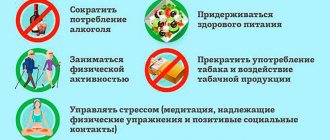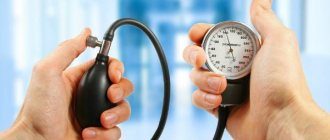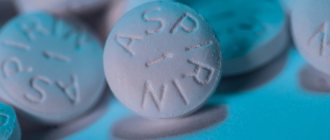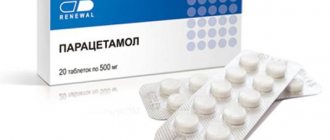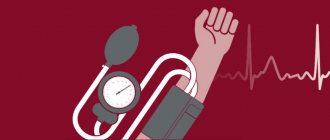What do we know about hypertension
Arterial hypertension is a disease in which the main symptom is an increase in blood pressure levels.
Most often, this disease progresses slowly, and even for a long period there may be no significant symptoms. At this stage, its important feature is that only occasionally moments of exacerbation may occur.
At the initial stage of development of hypertension, rises in blood pressure may be infrequent and depend on the body's response to external factors. This could be physical strain, stress, or even eating certain foods. A common occurrence in such people is burdened heredity.
The following symptoms may gradually appear:
- Noise in ears;
- Pain in the occipital region;
- Dizziness;
- Weakness;
- Attacks of tachycardia.
Sometimes negative manifestations of the heart may also occur. These include squeezing pain and a feeling of heaviness. Hypertensive attacks are usually accompanied by cardiac arrhythmias, and headaches may also be more severe during this period.
If the treatment of arterial hypertension is not given due importance, then over time it can develop into heart failure. This is due to the fact that in the last stages of the disease, cardiac output is significantly reduced. Against this background, the secretion of renin and, accordingly, angiotensin 2 increases, which leads to an increase in the hormone aldosterone in the blood.
The longer this process takes, the more pronounced the vascular tone becomes.
With hypertension, organic changes occur in the walls of blood vessels, which are followed by metabolic disorders and depletion of reserves in the vital structures of the body.
Signs of the condition
The symptoms of the pathological condition are similar to the clinical picture of arterial hypertension, when fluctuations in blood pressure levels affect the functional state of the main organs and systems.
The first signs of systolic hypertension are:
- recurrent headaches;
- causeless fatigue;
- visual impairment;
- squeezing pain in the chest area;
- decreased tolerance to physical activity.
An increase in systolic pressure is accompanied by headache, which is localized in the temporal and parietal zones
When the level of upper pressure increases and the lower pressure remains normal, pain occurs in the myocardium. Patients experience pressing pain that increases with physical activity and decreases with rest.
When systolic hypertension is combined with a slow pulse, the circulatory process is disrupted, which leads to damage to the brain and myocardium. When the pulse becomes critically low (less than 55), sharply reduced hemodynamics provokes the occurrence of a heart attack, stroke, as a result of impaired hemodynamics of myocardial and brain cells. With minor changes in the contractile activity of the heart muscle, compensatory mechanisms are activated to prevent the development of acute conditions. However, the combination of bradycardia with high pulse pressure is a reason to consult a specialist.
Daily rules for normalizing blood pressure
By following a number of simple recommendations, you can significantly alleviate the condition and bring your blood pressure to normal levels:
Get a full night's sleep (on average 8 hours is required). A well-designed menu, implying at least 4 meals during the day. Prevention of oxygen starvation. Regular ventilation of the premises and walks are necessary. A properly organized workplace. Lack of lighting or an uncomfortable posture can cause headaches and pressure surges. Before going to bed, lying on your back, you need to raise your legs high (you can lean them against the wall) to ensure the outflow of blood. Lie in this position for a quarter of an hour. Home pageHealth and medicine
If a person wakes up in the morning but feels sleep-deprived and often notices headaches and dizziness, especially when he sits up suddenly after lying down, most likely his lower blood pressure is too low.
Periods of low blood pressure are observed even in a healthy person, for example, due to the use of certain medications, from constant noise, fatigue and a high electromagnetic field. If these symptoms persist, they speak of a chronic problem of low diastolic pressure.
Causes of systolic hypertension
A pressure of 140 over 60 can be either a short-term disorder or a symptom of a dangerous pathology. Reasons for this violation:
- improper use of antihypertensive drugs;
- severe stress;
- physical fatigue;
- heart failure.
In hypertensive patients, the reasons for a decrease in diastolic pressure while maintaining a high systolic indicator are often due to the incorrect use of long-acting antihypertensive drugs. This disorder manifests itself for a short time; over time, the diastolic indicator increases.
If a hypertensive patient takes medications incorrectly, he can only achieve a decrease in lower blood pressure
Short-term changes in blood pressure can be caused by stress or extreme fatigue. Rest enough for blood pressure to return to normal and diastolic pressure to rise to normal values.
A dangerous pathology that provokes a decrease in diastolic readings with an increase in systolic pressure is heart failure. It is diagnosed mainly in older people, but increasingly people over the age of 30 are faced with this pathology.
Daily rules for normalizing blood pressure
By following a number of simple recommendations, you can significantly alleviate the condition and bring your blood pressure to normal levels:
- Get a full night's sleep (on average 8 hours is required).
- A well-designed menu, implying at least 4 meals during the day.
- Prevention of oxygen starvation. Regular ventilation of the premises and walks are necessary.
- A properly organized workplace. Lack of lighting or an uncomfortable posture can cause headaches and pressure surges.
- Before going to bed, lying on your back, you need to raise your legs high (you can lean them against the wall) to ensure the outflow of blood. Lie in this position for a quarter of an hour.
When a person experiences an increase in blood pressure, in addition to the upper (systolic) and lower (diastolic) values, it is necessary to take into account the difference between them.
The higher it is, the more dangerous this condition is for the body, since the load on the myocardium increases significantly.
Therefore, a pressure of 140 over 50 or 60 is extremely unfavorable for a person and requires immediate medical attention.
Natalya Tver
I cured hypertension in 2 months together with my husband! A remedy for 99 rubles helped me, which I learned about from an interview with doctor Bokeria L.A.
Read the article
Treatment of pathology
Drug therapy should be carried out under the supervision of a physician.
If systolic pressure is more than 140 mm Hg. Art. does not cause discomfort in a person; it is quite simple to monitor. If such indicators are accompanied by pathological symptoms, it is better to consult a doctor for qualified medical help. He will prescribe medications, select the dosage and give general recommendations, taking into account the course of the disease, symptoms and individual characteristics of the patient. In this case, you cannot self-medicate, as it can provoke complications and lead to irreversible consequences.
Symptoms that require qualified help:
- weakness;
- visual impairment;
- sleep disturbance;
- headache;
- rapid pulse;
- destruction of the vitreous body;
- nausea;
- sweating;
- vomit;
- prostration;
- migraine.
What should be the pulse of a healthy person?
The pulse of a healthy person should be 60-100 rhythmic beats per minute. It should be clearly noticeable. If the pulse is felt weakly, sometimes completely disappearing, this may indicate pathologies.
The number of pulse beats can be influenced by many factors:
exercise stress;
general health;
person's weight.
Therefore, it is worth taking all aspects into account before making any diagnoses. So, for example, an athlete or a young healthy person’s pulse can reach 55 beats per minute, and this will be considered normal, while for an elderly person such a pulse is a sign of bradycardia
And at the same time, constant high levels can warn that the heart is working at the limit of its capabilities.
Blood pressure and pulse are not interrelated in any way. That is, with high blood pressure, a rapid pulse is not necessary, and vice versa. In other words, if a person has a blood pressure of 140/60, a pulse of 60, and at the same time he feels well, this is the norm. Still, you should keep these two indicators within limits and not allow excessive increases.
Symptoms
At a pressure of 140/60, significant clinical symptoms usually do not occur. The patient may complain of some weakness, fatigue, increased sweating, vague discomfort, heaviness in the heart area. With a higher SBP, complaints become obvious:
- headache diffused or localized in the back of the head;
- dizziness;
- spots before the eyes;
- tremor of the limbs;
- facial hyperemia;
- feeling of heartbeat;
- tachycardia;
- general deterioration of health.
There are no symptoms even with high blood pressure numbers and a large difference between SBP and DBP, if the patient is adapted to the existing indicators. In this case, bringing the pressure to normal causes clinical hypotension. Despite this, the patient needs to normalize all blood pressure indicators. Otherwise, the risk of developing cardiovascular complications increases along with an increase in CPP and other characteristics of the cardiovascular system (cardiovascular system).
Blood pressure 140 over 60 what to do
Given these indicators, the decision to take a particular drug is made by the doctor. All medications for hypertension lower both lower and upper blood pressure. With a blood pressure of 140 over 60, the diastolic (lower) indicator is therefore low, and improper self-medication can lead to an even greater decrease in blood pressure, the development of life-threatening diseases, and even death.
The specialist will recommend what medications to take after a full examination and test results. As a rule, several medications are prescribed at once, which:
- Improves heart function and strengthens the heart muscle.
- Normalize the functioning of blood vessels and increase their endurance.
- Remove excess fluid from the body (in case of swelling).
Human blood pressure 140/60
A blood pressure of 140 over 60 represents borderline hypertension with high pulse blood pressure values. This condition can be caused by significant physical activity or severe vascular atherosclerosis; possible causes also include diabetes mellitus and renal failure. In this case, the patient complains of dizziness, headache, shortness of breath and heaviness in the chest. The danger of such pressure lies in frequent complications such as vision loss and kidney failure.
A pulse of 60 indicates minimal strain on the heart muscle.
Blood pressure 140/60 possible causes
Typically, the development of the disease is associated with pathological processes in the vascular system. This can be either atherosclerosis or weak vascular tone. All this gradually leads to the disruption of blood circulation and the development of hypoxic processes in tissues.
What can trigger the development of the disease:
- A malfunction of the nervous system, when arterioles spasm due to hyperactivity of nerve cells. Most often, this phenomenon is encountered by people after stressful situations, general exhaustion, as well as by elderly people.
- A benign hormone-producing tumor also plays an important role in the development of hypertension. This disease is associated with dysfunction of the adrenal glands, which leads to increased production of adrenaline. At the same time, vascular pathology is also accompanied by an increased load on the heart.
- Metabolic disorder, which is due to the fact that the balance of minerals in the body is lost. Most often, this phenomenon is due to the fact that sodium ions are retained in the blood. The load on the kidneys gradually increases and the volume of total fluid in the body increases.
With hypertension, regardless of the cause, blood viscosity increases, which significantly reduces overall blood flow; tissues and organs begin to suffer from a lack of oxygen and nutrients. Gradually, the walls of the entire vascular system thicken, and their lumen becomes narrower.
With an increase in blood pressure, a high level of resistance force is recorded in the entire peripheral system. Quite often, with hypertension, fibrosis and decreased elasticity of blood vessels are detected, which are already considered secondary changes. Against this background, changes occur in tissues up to the development of nephroangliosclerosis and hypertensive encephalopathy.
Such factors are conditional, since many people face stressful situations, and not everyone develops hypertension.
It is worth noting that if immediate relatives suffered from arterial hypertension, the risk of developing the disease increases.
Is blood pressure normal at 140/80 mmHg? and should anything be done to reduce it?
In the modern world, we increasingly hear that a person has problems with blood pressure.
In Russia, the rate of the population suffering from blood pressure has reached 40%. Cases of hypertension among young people are becoming more and more common. The normal blood pressure is 120 per 80 mmHg. Art. 140 over 80 - pressure, which may be a cause for concern and contact a specialist. Let's look at this blood pressure indicator. What does it mean and how does it manifest itself?
What does pressure 140 to 80 mmHg mean? Art.?
Oxygen and nutrients enter our body through blood, which circulates through the vessels, exerting a certain pressure on them. Blood pressure manifests itself as a result of the process of compression of the walls of blood vessels. The unit in which it is measured is millimeters of mercury.
There are upper (systolic) and lower (diastolic) blood pressure. The indicator of upper blood pressure depends on the force and speed of the heart pushing blood into the vascular system. Lower - minimum pressure during the pause between compressions.
Blood pressure indicators depend on factors such as:
- the volume of blood that circulates in our body;
- vascular resistance to blood flow;
- an indicator of the strength of heart contractions.
Blood pressure can depend on both a person’s gender and age. However, the norm for most people is 120/80. Although each person’s blood pressure may be individual, deviations from this indicator are considered a cause for concern.
If your blood pressure is 140 over 80, what does that mean? A reading of 140 indicates that the upper systolic blood pressure is elevated. In the case when the upper pressure is 140 and the lower 80 is normal, the initial development of arterial hypertension is possible.
What to do if your blood pressure is 140 over 80 and your pulse is 80? First, let's decide on the question of what heart rate is considered normal for a person.
Normal heart rate for:
- teenagers - 55–95;
- people under 50 years old - 60–80;
- elderly people over 50 years old - 70–90.
Thus, we see that the pulse rate is not exceeded and it is necessary to treat the manifestations of hypertension directly. Based on this, in the case when the pressure is 140 to 80, while the pulse is 80 beats per minute, there is no serious cause for concern, except for directly increased blood pressure.
Blood pressure 140 over 85 is this normal? An increase in lower blood pressure can normally range from 60 to 85 mm Hg. Art. If your reading is 85 occasionally during the day, there is no cause for concern. But in case of chronic manifestation of the maximum indicator of lower blood pressure, especially in combination with increased systolic blood pressure, it is necessary to consult a doctor.
Is it normal?
It is impossible to say that 140 over 80 is normal pressure. Because even this, albeit not a very significant increase in blood pressure, is a sign of the manifestation of stage 1 hypertension.
With such pressure, many people do not notice a deterioration in their health or the appearance of any signs of illness. However, despite this, if you do not see a doctor and do not start treating the developing disease in time, it can progress and seriously affect the internal organs of a person.
The main symptoms of hypertension are:
- heartache;
- dizziness;
- nausea;
- pain in the back of the head;
- pulsation in the veins;
- clouding of consciousness;
- fear and feeling of anxiety.
In men
According to statistics, men are more susceptible to cardiovascular diseases than women. Risk factors for the stronger half of humanity are: heredity, smoking, age, obesity. The causes of hypertension in men are:
- heavy physical exertion on the body;
- poor nutrition;
- uncontrolled use of drugs;
- frequent use of alcohol and tobacco;
- a permissive attitude towards your body.
What to do with a blood pressure of 140 to 80 in men? Treatment and prevention of various indicators of high blood pressure, including 140/80 in men, is as follows:
- reducing salt intake;
- marinades, spices, spicy;
- reducing alcohol consumption;
- quitting tobacco;
- reducing physical activity;
- reducing stress levels.
In a teenager
The modern rhythm of life and the state of the environment are such that many diseases that were previously characteristic of older people are beginning to appear among young people. Blood pressure norms for adolescents are approximately the same as for adults: 100–140 per 70–90 mmHg. Art., pulse 60–80 beats.
The reasons for pressure 140 to 80 in a teenager can be:
- excessive physical activity;
- hormonal changes;
- poor nutrition;
- obesity;
- stress and emotional stress;
- heredity.
During pregnancy
Pressure of 140 over 80 during pregnancy can be caused by the fact that when women carry a fetus, the amount of circulating blood increases. In this case, the vessels can hardly bear such loads, and internal discomfort occurs.
Features of treatment for pregnant women include the need to constantly be under medical supervision to avoid a decrease in heart rate. Such patients are limited in the use of medications. You should not take alcohol tinctures so as not to harm the fetus. Doctors usually advise pregnant patients to:
- eat the fruits of viburnum and lingonberries;
- drink teas with lemon balm and mint.
However, this recommendation will be useful to all people who detect a pressure of 140 to 80 on a tonometer. What are the reasons and what to do in this case?
Causes
The causes of pressure 140 to 80 can be:
- heredity;
- abuse of fatty, salty, spicy foods;
- nervous exhaustion;
- passive lifestyle;
- presence of unhealthy habits such as smoking, drinking alcohol;
- strong physical activity;
- stress.
Risk factors for high blood pressure
What to do?
In total, there are three degrees of hypertension, and an indicator of 140 to 80 indicates the first degree. If the pressure is 140 over 80, what should I do?
You should only worry if it persists continuously for a long time. And by immediately contacting a doctor, you can prevent the disease from developing. If such indicators are not frequent, then there is no reason to worry, and you can get by with general independent measures to improve your health.
Don't rush to take medications, you can try first:
- to refuse from bad habits;
- start going for a massage;
- eliminate junk food;
- engage in light physical activity;
- give up coffee;
- go on a diet.
Doctors also recommend:
- drink medicinal herbs;
- drink cocktails containing oxygen;
- take hydrogen sulfide baths;
- sauna.
What tablets should I take?
If the pressure is 140 over 80, what does modern medicine recommend to take? Blood pressure-lowering drugs include:
- diuretics: Indapamide, Hydrochlorothiazide, etc.;
- sedatives: valerian, etc.
What else can you drink?
To the list of what else you can drink with a pressure of 140 to 80, you can add medicinal herbs, natural fruits and plants. Lowering blood pressure may include:
- motherwort;
- lemon balm;
- valerian;
- lingonberries;
- viburnum;
- geranium;
- cloves, etc.
Typically, the course of treatment with such herbs is about a month.
Useful information on how to lower blood pressure without medications can be found in this video:
Conclusion
- Blood pressure 140 over 80 is slightly too high and, since it does not differ much from the accepted norm of 120/80, does not pose a threat to human health. With this indicator, symptoms of the initial stage of hypertension development appear.
- For many older people, this blood pressure can be interpreted as the upper limit of normal; it is more dangerous for adolescents and people under 50 years of age.
- The causes of the disease lie in heredity, unhealthy lifestyle, constant stress and lax attitude towards one’s health.
- Prevention of the disease includes: giving up bad habits, diet, massage, light physical activity, rest, etc.
- If you have been unable to avoid the disease, you should first seek help from a doctor. He will help you take the right steps to avoid further development of the disease. Self-medication is highly undesirable.
Source: https://clinica-opora.ru/%D0%BA%D0%B0%D1%80%D0%B4%D0%B8%D0%BE%D0%BB%D0%BE%D0%B3%D0 %B8%D1%8F/%D0%BD%D0%BE%D1%80%D0%BC%D0%B0%D0%BB%D1%8C%D0%BD%D0%BE-%D0%BB%D0 %B8-%D0%B0%D1%80%D1%82%D0%B5%D1%80%D0%B8%D0%B0%D0%BB%D1%8C%D0%BD%D0%BE%D0% B5-%D0%B4%D0%B0%D0%B2%D0%BB%D0%B5%D0%BD%D0%B8%D0%B5-140-%D0%BD/
Why does it occur
Both serious illnesses and external factors can provoke blood pressure of 140/60:
- stress;
- physical stress;
- starvation;
- overwork;
- aortic valve defect;
- overweight;
- pathologies of the endocrine system;
- adrenal insufficiency;
- sudden weight loss;
- sedentary lifestyle;
- diabetes;
- heart failure;
- intracranial hypertension;
- lack of moderate sports activity;
- hypertension;
- iron deficiency;
- atherosclerosis;
- heredity;
- tumors;
- anemia;
- excess salt in the diet;
- diseases of internal organs;
- bad habits;
- vascular pathologies.
- pregnant women (especially during the third trimester);
- aged people;
- athletes (for them this is a variant of the norm).
Return to contents
Why does it occur more often in older people?
This combination of indicators is more typical for older people. This is due to age-related changes in the vascular system:
- vessels become less flexible;
- the heart rate changes;
- the walls of blood vessels become less elastic;
- pulse quickens;
- atherosclerosis;
- age-related hypertension.
Controlling blood pressure will help prevent the development of vascular pathologies.
As you age, you need to be more careful about your blood pressure, since after 50 years it tends to increase. To avoid serious problems and fatal consequences, you need to measure it yourself twice a day. If there is a permanent increase in upper, lower or pulse pressure, you should consult a therapist or cardiologist.
Causes of high pulse pressure
The level of pressure in most cases depends on age. Over time, a person’s organs, his heart and blood vessels age and “wear out,” which is the reason for the increase in blood pressure. Even for those who suffered from hypotension in their youth, after 50 years the pressure normalizes, and at an older age, in most cases, arterial hypertension develops.
A pulse pressure reading above 60, and in this case 80 units, is a sign of increased tone of the walls of large vessels, in particular the aorta. This difference is often observed in older people, as well as those suffering from coronary heart disease and those who have already suffered a heart attack or stroke. A number of other reasons include the following:
nervous tension;- heart failure;
- bad habits;
- hypertension;
- diabetes;
- tumors;
- endocrine disorders;
- malfunction of the thyroid gland;
- fasting, strict diet;
- physical or emotional fatigue;
- problems with the kidneys and/or adrenal glands;
- uncontrolled intake of junk food;
- excess salt in the diet;
- weight change;
- pregnancy (third trimester);
- lack of iron in the body.
All these reasons are a direct indicator for consultation with a cardiologist and a corresponding examination of the body.
What to do if you have high blood pressure
The question arises: what needs to be done with such indicators? Should I immediately take medications or give preference to physiotherapy, a special diet and herbal medicine? Of course, in each specific case the issue should be resolved individually and only by the attending physician. But with such pressure, which has been recorded several times, but does not occur systematically, non-drug treatment is indicated in combination with adherence to a correct lifestyle.
Here's what we recommend you do:
- give up bad habits: excessive consumption of alcoholic beverages and smoking;
- adhere to a special diet with limited salt and canned foods;
- take psychorelaxation courses in combination with therapeutic hypnosis, relaxing massage, acupuncture;
- choose optimal physical activity in the form of walking, swimming, dancing, cycling;
- take physiotherapy courses: electrosleep, electrophoresis, hydrogen sulfide baths, etc.;
- be treated with herbs and traditional medicine.
Lowering blood pressure at home
You can reduce pulse pressure yourself if it is not constant.
This can be done with:
- Self-massage of the neck. The procedure begins with light stroking and rubbing the muscles on both sides of the spine. Then you can increase the intensity by kneading the muscles. Finally, return to smoothing. Self-massage warms up the muscles and increases blood circulation in the cervical spine, which has a positive effect on blood flow to the brain and relieves headaches.
- Exercises for the shoulder girdle and neck. They consist of turning the head up, down and to the sides, in rotational movements to the right and left. It also increases blood circulation in the blood vessels of the brain, gives oxygen flow to the brain, relieves spasms and pain.
- Walking in the fresh air and doing breathing exercises.
Normalizing blood pressure with medications
If non-drug treatment does not help and pulse pressure does not decrease, then appropriate medications should be used.
These can be diuretics, which reduce blood pressure by removing excess fluid from the body. Among diuretics, there are several groups of drugs that have features in their mechanism of action and effectiveness.
These are thiazide, loop and potassium-sparing diuretics. These groups of medications are prescribed only by the attending physician, taking into account the results of the examination of the patient, age and general health.
The second group of drugs is calcium channel blockers. They prevent blood vessels from narrowing, restoring normal blood flow and stabilizing blood pressure.
Instant action agents - ACE inhibitors. They can be used for a long time. Adrenergic blockers and angiotensin antagonists are also used.
You can find out the effectiveness of the prescribed therapy after some time by normalizing the pressure and the absence of symptoms of pulse pressure.
What to do?
During an exacerbation, Bisoprolol is taken to reduce the load on the heart and dilate blood vessels.
If a person's blood pressure is 140/60, he needs to take antihypertensive drugs that will prevent the progression of arterial hypertension and help avoid its consequences. Most often, beta-blockers, namely Bisoprolol or Atenolol, are used to reduce the load on the heart and dilate blood vessels. It is also possible to use ACE inhibitors, which have a milder effect compared to the first group of drugs and reduce the likelihood of risks associated with kidney disease. These drugs must be combined with diuretics, which reduce the amount of blood circulating in the vessels. It is important to limit the consumption of salt in food, because it retains fluid in the body, increasing the BCC (circulating blood volume).
It is important to constantly take anticoagulants to prevent blood clots and possible blockage of blood vessels.
It is recommended to change your lifestyle, get rid of bad habits and unhealthy diet. It is necessary to increase the content of vegetables and fruits in the diet, which are rich in vitamins and microelements. You need to do exercises, avoid stress and disruptions to your daily routine. Active physical activity and light sports such as swimming and running will also be useful. In combination with traditional methods of therapy, traditional medicine is used, which involves a large number of infusions and decoctions of herbs. You can do them yourself at home, which means that such therapy does not require large expenses.
Causes
Most often, the causes of this phenomenon are pathologies of the heart, vascular system and adrenal glands. But, besides this, there are other factors that can contribute to the appearance of such a deviation:
- Genetic predisposition;
- Blockage of blood vessels with cholesterol plaques;
- Excess body weight;
- Constant lack of sleep, stress, overwork;
- Disturbances in the functioning of the endocrine system;
- Congenital or acquired heart defect;
- Iron deficiency in the body;
- Atherosclerosis;
- Excessive consumption of salty foods;
- Abuse of bad habits and coffee;
- Serious spinal injuries;
- Oncological diseases;
- Diets (fasting) or poor nutrition;
- Frequent severe stress, mental and physical overload.
How to cope with AD 14060
If the patient is worried about blood pressure of 140/60, you need to visit a cardiologist or neurologist. You may have to undergo additional tests, for example, a Doppler ultrasound. Treatment with folk remedies can negatively affect your well-being.
For hypertension, the following advice from doctors will help:
- Stop smoking. Cigarettes provoke serious problems with blood vessels. No matter what powerful drugs you take along with your smoking habit, you are unlikely to achieve a long-term positive result.
- Limit your consumption of alcohol, salt, and sugar.
- Move actively, walk, run, or at least do morning exercises. When training your heart, pay attention to proper breathing. Breathe evenly and calmly, deeply.
- Avoid fried, salty and generously sweetened foods and baked goods.
- Drink 1.5-2 liters of pure liquid per day.
Why is there a big difference between upper and lower pressure?
If a decrease in the PBP norm is often caused by stress, bad habits and nervous strain, then pulse hypertension is almost always a serious symptom of one of the following diseases:
- increased intracranial pressure;
- pre-stroke or pre-infarction condition;
- anemia;
- heart block;
- tuberculosis.
If the blood pressure level is regularly exceeded, it is necessary to undergo examination by a doctor to find out the reason for the difference between the upper and lower limits of blood pressure values. This condition, accompanied by dizziness, nosebleeds or fainting, is a serious risk factor for heart attack or stroke, cerebral hypoxia for both young and elderly people.
Causes of high upper pressure
Hypertension is a high systolic indicator; it can be caused by a number of reasons, from hereditary predisposition to changes in atmospheric pressure or other changes in weather conditions. Bad habits that negatively affect the condition of blood vessels - smoking, systematic drinking - play an important role. Poor nutrition—regular consumption of fatty and salty foods—has a negative effect on blood pressure. A sedentary lifestyle and nervous tension also lead to arterial hypertension.
Low lower pressure - causes
Reduced lower pressure is associated with a number of factors; it is a consequence of physical or nervous stress, violation of rest or nutritional regimen, chronic fatigue, and lack of sleep. At retirement age, hypotension - a condition when diastolic pressure is low - is caused by a number of functional disorders of the cardiovascular system, such as:
- cerebral stroke;
- chronic heart failure;
- cardiac ischemia;
- tachycardia or bradycardia.
Can there be complications with a reading of 140/60 or lower?
It was already mentioned above that a large gap between the upper and lower pressure is a specific symptom of insufficient blood supply to the body tissues. The chronic presence of such a cardiology clinic leads to the development of various types of complications:
- Neurological disorders.
- Cardiac and vascular abnormalities.
- Nephrological disorders.
Against the background of these deviations, the likelihood of severe diseases increases:
- Atherosclerosis.
- Iron deficiency anemia.
- Heart attack.
- Renal dysfunction.
- Endocarditis.
- Intracranial hypertension.
- Alzheimer's syndrome.
- Hypoxia of the brain.
- Thyroid insufficiency.
- Heart blocks.
- Pathologies of blood vessels.
- Partial or complete loss of vision.
Experts note that with such blood pressure, the risk of heart attack, ischemia and renal failure increases 7 times.
Diagnosis and treatment
To find out why signs of hypotension appeared, you need to contact a neurologist or cardiologist. First of all, it is necessary to identify the disease that could cause hypotension. To diagnose the condition of the heart, electrocardiography, echocardiography, magnetic resonance imaging of the heart and biochemical blood test are prescribed.
To identify thyroid diseases and hormone imbalances, a blood test for hormones and an ultrasound examination of the thyroid gland are prescribed. A complete blood count will help determine anemia and other abnormalities that could cause diastolic hypotension. Only after the diagnosis is made, the doctor prescribes treatment for the patient.
Causes
The range of reasons that can provoke blood pressure levels of 140 to 60 is quite wide. These include:
- chronic stress and anxiety;
- improper functioning of the heart, which is caused by pathologies in its structure;
- state of overwork;
- improper functioning of the endocrine system and hormonal imbalance;
- poor nutrition, which does not meet the body's needs for essential substances;
- excessive consumption of fatty, fried, spicy and smoked foods;
- excessive salt intake;
- pregnancy period from 32 weeks to birth;
- a history of diabetes mellitus;
- lack of nutrition or adherence to a strict diet;
- chronic arterial hypertension;
- adrenal dysfunction;
- abuse of excessive physical activity, which is performed at the limit of strength;
- excessive consumption of alcoholic beverages;
- smoking.
In addition to the physical condition of the body and an unhealthy lifestyle, the cause of a pressure of 140 to 60 can be the incorrect and excessive use of drugs that reduce blood pressure. Therefore, any medicine should be taken only under the supervision of the attending physician.
It can be concluded that pregnant women, elderly people and professional athletes are at risk for the likelihood of this pathology occurring in the state of blood pressure.
Now hypertension can be cured by restoring blood vessels...
High blood pressure in the elderly
As a person ages, blood pressure levels also increase. Over time, the walls of blood vessels lose their elasticity, and the rhythm of heart contraction changes. And to determine their norm, an elderly person should measure blood pressure every day and record the readings. At the slightest deterioration in your health, it would be good to immediately contact a therapist with your notes.
More often, older people experience hypertension, that is, high blood pressure. It is usually accompanied by headaches, sleep disturbances, migraines, nausea and even loss of vision. Hypertension is very difficult to cure, so you should not postpone a visit to the doctor if you have at least one of the above signs, or, let’s say, the tonometer showed a pressure of 140 over 60.
Is this blood pressure normal?
A blood pressure of 140 over 60 (in both the elderly and young) cannot be considered normal. It does not fit any of the normal criteria for assessing blood pressure:
- the systolic indicator exceeds the norm;
- diastolic - below normal;
- pulse pressure exceeds the maximum permissible value of 60 mm.
According to statistics, no more than 15% of the population over 60 years of age live with normal blood pressure. All others are diagnosed with high blood pressure. Even if a person has been hypotensive all his life, in old age he will suffer from hypertension.
What does a high pulse difference mean?
A high pulse difference can be a sign of various pathological conditions.
In addition, it can be observed during physical and psycho-emotional stress. Diseases in which a pressure of 140 over 60 and a pulse of 60 will be observed include: It is worth noting that with such diseases the blood pressure readings will be constant. If there is an increase in pressure from normal to such indicators, then this will most likely indicate hypertension.
What are the risks?
With a large pulse difference and isolated systolic hypertension, there is a risk of stroke and myocardial infarction. In addition, there is insufficient blood supply to the kidneys in the periphery, and there is also a risk of dilation of the heart chambers.
What do arterial readings mean: 140-149 to 60-40 and below?
If the tonometer recorded a pressure level of 140 over 60, what does this mean? The combination of such numbers is not considered normal in terms of either systolic or diastolic indicators, since the difference between them exceeds the stipulated norms.
The larger the gap between systole and diastole, the higher the load on the heart muscle, so this condition poses a clear threat to humans. Doctors note:
- When the upper blood pressure reaches the number “140” and characteristic clinical symptoms begin to appear, there is a danger of a hypertensive crisis.
- If the diastolic value drops below 70 units, this indicates that at the moment of relaxation the myocardium pumps much less blood fluid than the body requires.
- Increased upper pressure with low diastole is often observed with weak blood vessel tone.
Relationship between pressure and pulse
The pulse rate, like blood pressure, is not a constant value, therefore it can change under the influence of certain factors.
Even in absolutely healthy people, after physical or emotional stress, the heart rate increases, but after 10-15 minutes the indicator independently returns to its original parameters.
With blood pressure 140/60, two variations of pulse abnormalities most often occur:
- Tachycardia (above 90 beats/min.).
- Bradycardia (decrease to or below 50 beats/min.).
However, it is necessary to take into account the following nuances:
| Pulse rate (bpm) | What does it indicate? |
| 30-40 | Norm. |
| Less than 30 or above 40 | A sign of pathological phenomena in the body. |
| 60 | If you feel normal, this is the norm. |
| Pregnant women develop preeclampsia. | |
| In old age, it indicates the following diseases: - ischemia; - atherosclerosis; - chronic heart failure. | |
| Up to 55 | This is the norm among professional athletes and young people. In old age – bradycardia. |
| 80 | Increased tone of large vessels, including the aorta. In this case, there is a threat of developing a hypertensive crisis. |
Chronically high pulse pressure leads to the following aggravations:
- Premature wear of the myocardium.
- The kidneys are constantly working under strain.
- Development of Alzheimer's disease.
In the presence of isolated hypertension, it is necessary to regularly check the pulse condition. Monitoring should be done twice a day (morning and evening).
Relationship with a person’s age and gender
The table shows the designations of blood pressure 140-149/60-40 for people of different age categories and gender:
| Gender and age of the person | What could it mean | |
| Children | It is considered a pathological condition. | |
| Teenagers | Develops against the background of: - hormonal changes; — VSD; — ISAG; - heart problems. | |
| Elderly | Initial stage of systolic hypertension. | |
| Adults | Women | During pregnancy, it can be either normal or a disorder that requires immediate medical attention. |
| Men | The first stage of isolated hypertension. For professional athletes it is not considered a deviation, as it can occur under certain loads. | |
During pregnancy
Blood pressure 140 over 60 during pregnancy - normal or abnormal? As you know, after conceiving a child, most expectant mothers experience an increase in blood levels due to the increased work of many body systems:
- If the pregnant woman feels normal and doctors do not find any abnormalities in the development of the fetus, then there is no reason to worry.
- If, against the background of blood pressure 140/60, a woman’s well-being noticeably worsens, then this is already an alarming sign, especially in the third trimester. Such arterial numbers may indicate the manifestation of late toxicosis, so you should definitely consult a doctor.
Do not under any circumstances try to normalize the indicator yourself using any antihypertensive drugs. Such actions can lead to a sharp drop in blood pressure, which is dangerous due to fetal hypoxia.
To avoid such serious consequences, pregnant women need not only to regularly measure blood pressure, but also to listen to their well-being.
Daily rules for normalizing blood pressure
By following a number of simple recommendations, you can significantly alleviate the condition and bring your blood pressure to normal levels:
- Get a full night's sleep (on average 8 hours is required).
- A well-designed menu, implying at least 4 meals during the day.
- Prevention of oxygen starvation. Regular ventilation of the premises and walks are necessary.
- A properly organized workplace. Lack of lighting or an uncomfortable posture can cause headaches and pressure surges.
- Before going to bed, lying on your back, you need to raise your legs high (you can lean them against the wall) to ensure the outflow of blood. Lie in this position for a quarter of an hour.
Blood pressure is a good marker of health status.
By observing changes in indicators, you can say with confidence whether a person is healthy, or, without a preliminary examination, determine which diseases are most likely developing in his body.
Therefore, if you notice any deviation from the norm, the patient is advised to seek help from a doctor as soon as possible. And the greater the violation of the norm, the sooner you should visit a doctor.
How to normalize
The only correct solution if it is necessary to normalize this pressure is to seek help from a specialist. However, some life circumstances preclude the opportunity to visit a doctor immediately when a problem arises. In this case, you can try to bring the pressure to normal levels yourself.
To do this you need:
- take a horizontal position and raise your legs at an angle of 30 degrees;
- take a diuretic tablet;
- take a folic acid supplement;
- take a sedative;
- prepare ginger tea and drink it at least 3 times a day;
- if you feel relatively normal, go for a walk in the fresh air;
- drink enough clean still water;
- do special breathing exercises.
Even normalization of the condition after using this technique does not exclude a visit to the doctor. At the first opportunity, it is necessary to undergo examination and consultation with a specialist.
